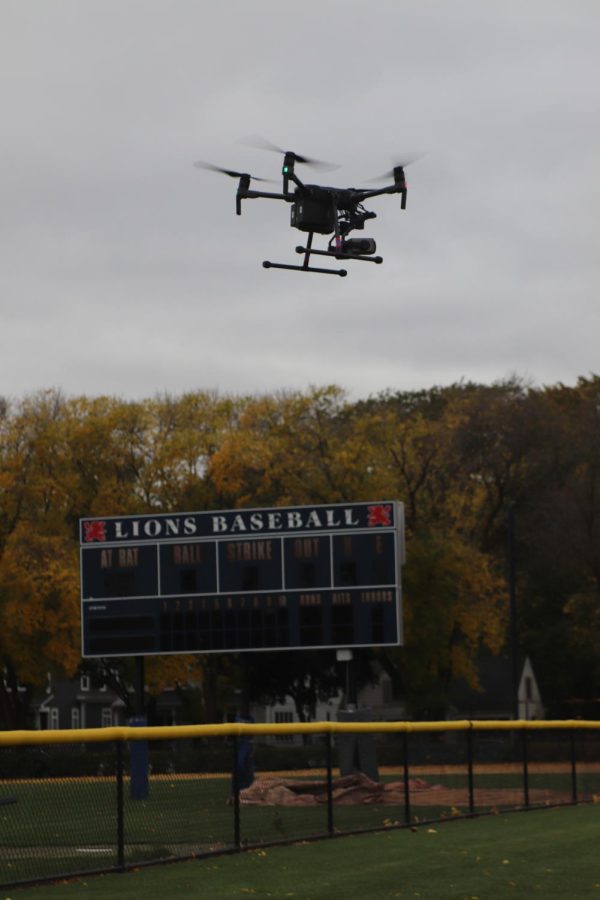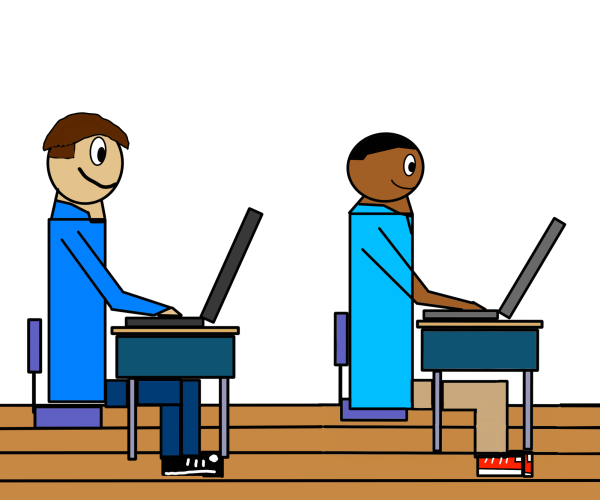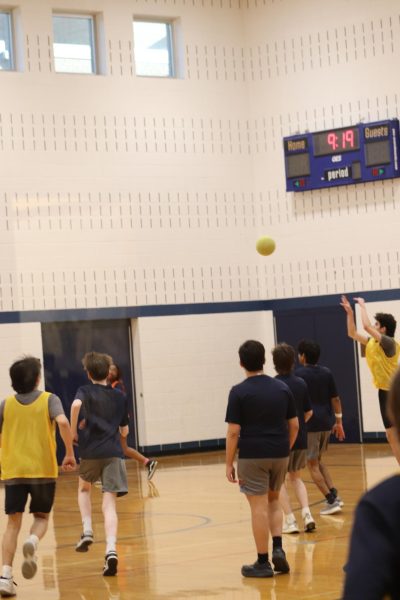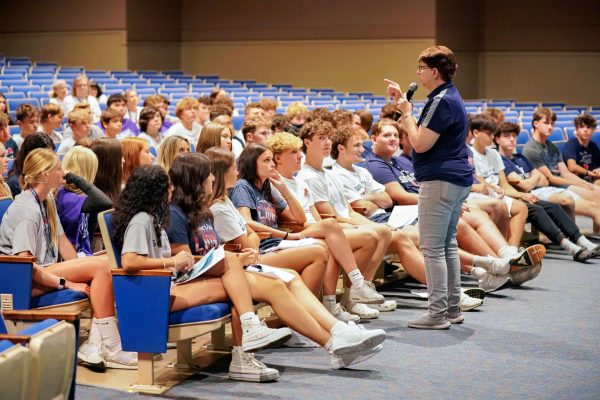New STEM classes encourage creativity and cleverness
Students observe how a forensic drone operates and moves in the sky.
Flash! Arm… Flash! Leg… Flash! Hand…Two students carefully capture each angle of the body in front of them. They take their time and ensure each photograph reflects the necessary components. Across the hall, students work diligently on their newest project: a keychain. They sketch, plan, and inquire, checking that each element is crafted carefully and precisely. They are classes away, but the students share a sense of creativity, ingenuity, and eagerness.
Forensics and Introduction to Engineering Design are two of Saint Viator’s newest classes. The classes promote creativity, a problem-solving mindset, and real-world application. They provide students with hands-on experiences that develop their skills and prepare them for the future.
Forensics is the science behind solving crimes. The deductions made through this process are then used in court to further connect the pieces of a crime. Forensics itself has a wide variety of career options. Some of these include detectives, criminal profilers, scientists, and crime analysts. Forensics teacher, Mrs. Jen Ruege, expressed the class’s objective.
“Career avenues in this field are numerous, so the class focuses on an introduction to a few possible options,” Ruege said.
Currently, the class is looking at the steps in processing a crime scene. They will study the importance of giving the proper attention to evidence at all stages of the investigation. A recent lab included practice in forensic photography. A mannequin was placed in the hallway, and the students captured “crime scene photos.” Exact distance and proper angles in the photographs ensured realistic results.
Later, students will observe the different types of evidence found at crime scenes and how it can be analyzed in a lab. Forensics student, Veronica Yu, has expressed her appreciation for the class’s diverse curriculum.
“I find Forensics interesting, as it is not just science. It includes photography, drawing, and evidence collection,” senior Veronica Yu said.
Though designated a science course, Forensics has various aspects that appeal to ranging interests. It sparks intrigue when providing real-world connections by examining case studies and bringing in guest speakers.
“I enjoy having people come in to talk. For example, the chief came to speak about a homicide investigation and how it was handled,” junior Isabella Matuk said.
The inclusion of guest speakers allows
students a better opportunity to understand what a job in the field entails. In addition, they obtain a better grasp of the education necessary to pursue such a career.
The class was added this year as another elective option for students. It is available to juniors and seniors who have successfully completed a life and physical science course. The class allows students to problem solve and come to conclusions based on solid evidence. Engineering, though still allowing students to problem solve, has a more creative-based curriculum.
The addition of Introduction to Engineering and Design (IED) is a part of Project Lead The Way (PLTW). Recently, the school received a grant that allowed the program to launch. PLTW creates a transformative experience and engaging environment for students pursuing classes in the fields of STEM. Unconventional approaches and innovative technology provide students with greater, more advanced opportunities. IED is the introductory level class available to all students. Next year, as an addition, the school hopes to introduce the class’s next level: Principles of Engineering.
IED allows students to utilize tools and apply them to engineering processes. These are then combined to solve real-world problems. The engaging curriculum inspires students to try different approaches and keep the future in mind. Sophomore, Brianna Santucci, expressed her penchant for the class.
“I like engineering because it opens up a whole new window of opportunity for me,” Santucci said.
Hands-on activities are the class’s standard. Mrs. Mroz, an IED teacher, stressed the importance of learning by experience.
“The students are working on something everyday. Tasks range from modeling and designing to measuring and developing,” she said.
Students recently finished an activity in which they functioned as both the client and designer. They were instructed to create a keychain that implemented a personal touch for their client. The engineer and the client worked in conjunction to design and develop a product suitable for the client’s needs. They then created 3D models and printed them. This functions as an informative yet enjoyable activity that parallels real-life situations. Mrs. Mroz is thrilled with the class’s success so far.
“It has been really cool to see how the students have jumped right in. They have not shied away from anything so far,” Mroz said.
Forensics and IED students observe, inspect, inquire, and cultivate. Through the courses’ career-like simulations, students have the opportunity to bridge creativity and experiential learning through a hands-on, innovative environment.
Your donation will support the student journalists of Saint Viator High School. Your contribution will allow us to purchase equipment and cover our annual website hosting costs.







